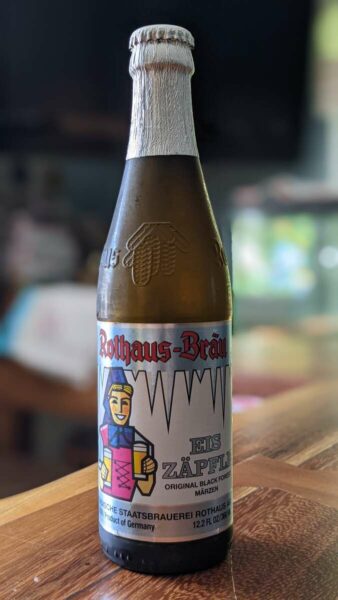
This sponsored column is written by Todd Himes, beermonger at Arrowine (4508 Lee Highway). Sign up for the email newsletter and receive exclusive discounts and offers. Order from Arrowine’s expanding online store for curbside pickup.
This year, more than ever, I’ve been fielding questions about the difference between an Oktoberfest, Marzen and a Festbier. Short answer? Not much. OK, thanks! Short column this week — I am on vacation.
Wait, you’re still here? You say: “Todd, it’s not that simple. In those small differences, there are big details and centuries of history.” OK, that is true. I guess I can get a little more into what you’re getting in the bottle, can or on tap when you see these words on the label.
First off, Oktoberfest is a celebration, tied to a time and a place, and by association, has come to describe a type of beer. The original Oktoberfest took place in 1810 to celebrate the marriage of the crown prince of Bavaria and his bride and was a five-day festival. Over the years, fairs, horse races, and many booths selling food and drink were added.
The drink most associated with the festival? Beer. In Germany, the name Oktoberfest is protected, and there are only six breweries in Munich that are allowed to serve beer at the celebration and make use of the name on their label. That name is then tied much more to the time and place than to the style of beer itself.

Traditionally, the styles served would have been Marzen, named because the beer was brewed in March before the advent of refrigeration and brewing was put on hold during the warm summer months. Now, typically when we think of Marzen, the rich amber-colored lagers of the fall come to mind. A personal favorite of mine is Port City Oktoberfest. However, if you were one of the few lucky enough to pick up some of the Rothaus Eiszäpfle when it landed, you know that German Marzen can be quite clear and golden as well.
The modern Festbier style has much foggier origins. The most repeated story leads back to Paulaner’s introduction of their strong golden Weisn style, but there is further research out there tying the introduction of this lighter style to the change from ceramic steins to clear glass. The fact of the matter is that this style is the current beer of the moment at Oktoberfest and is growing in popularity with many American brewers as well. Our friends over at DCBeer recently did a taste test of many Oktoberfest offerings, and it was interesting to note that a modern Festbier from Union was the winner.
The confusion between names and styles is understandable in many cases, so feel free to keep asking your Beermonger. Do you prefer the more American take on the Marzen style, or are you a purist who wants the modern Festbier that will flow in Munich hopefully again in 2022?

